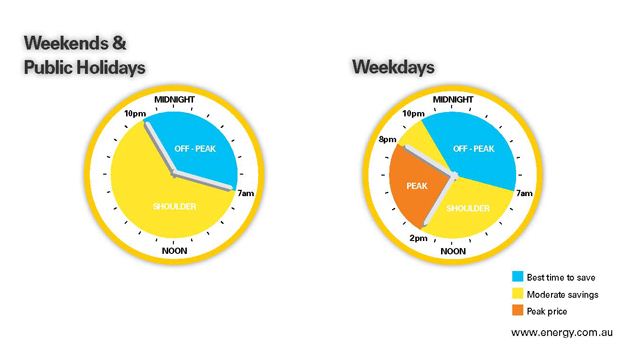With a smart or interval meter the day is divided into three different time-bands which are called Peak, Shoulder and Off Peak. Your electricity is measured using a meter that records electricity consumption in 30 minute intervals and the electricity rates are different in each of these time-bands, so you pay different rates for your electricity according to the time of day it is used.
A higher rate is charged during the Peak period, than in the Shoulder and Off Peak periods. So your rate is less when the demand for electricity is lower and more when it is higher.
Are you on a smart meter?
Check on your last power bill to see if your energy use is being segmented in to the three time categories, peak, shoulder and off peak.
For each time period you will be charged a different rate for your electricity.

Using a smart or interval meter can help you save money by managing or shaping your power usage to incorporate more off peak and shoulder period power usage.
|
Smart / Interval Rates (eg taken April 2012) |
|
|
Shoulder |
18.04 cents / kW including GST |
|
Peak |
44.66 cents / kW including GST |
|
Off Peak |
10.56 cents / kW including GST |
With a few routine changes you may be able to make use of the off peak periods and pay 10.56 cents rather than 44.66 cents per kW. Worse still if you don’t know you are on smart meter rates you could be paying 44 cents per kilowatt unnecessarily.
Firstly target the major appliances and the ones you use every day. A simple idea is to use your appliance timers to set the dishwasher, washing machine, clothes dryer and pool pump and any other energy intensive devices to work after 8 pm or better still 10 pm and stop before 7 am. Given some of these appliances would be used almost every day the cumulative effect on your power will be surprising.
A smart meter may not be right for everyone and can depend on your lifestyle. You will only get the savings if you make use of your shoulder and off peak periods otherwise during peak times you will actually be paying a higher amount than if you were on a flat rate.

